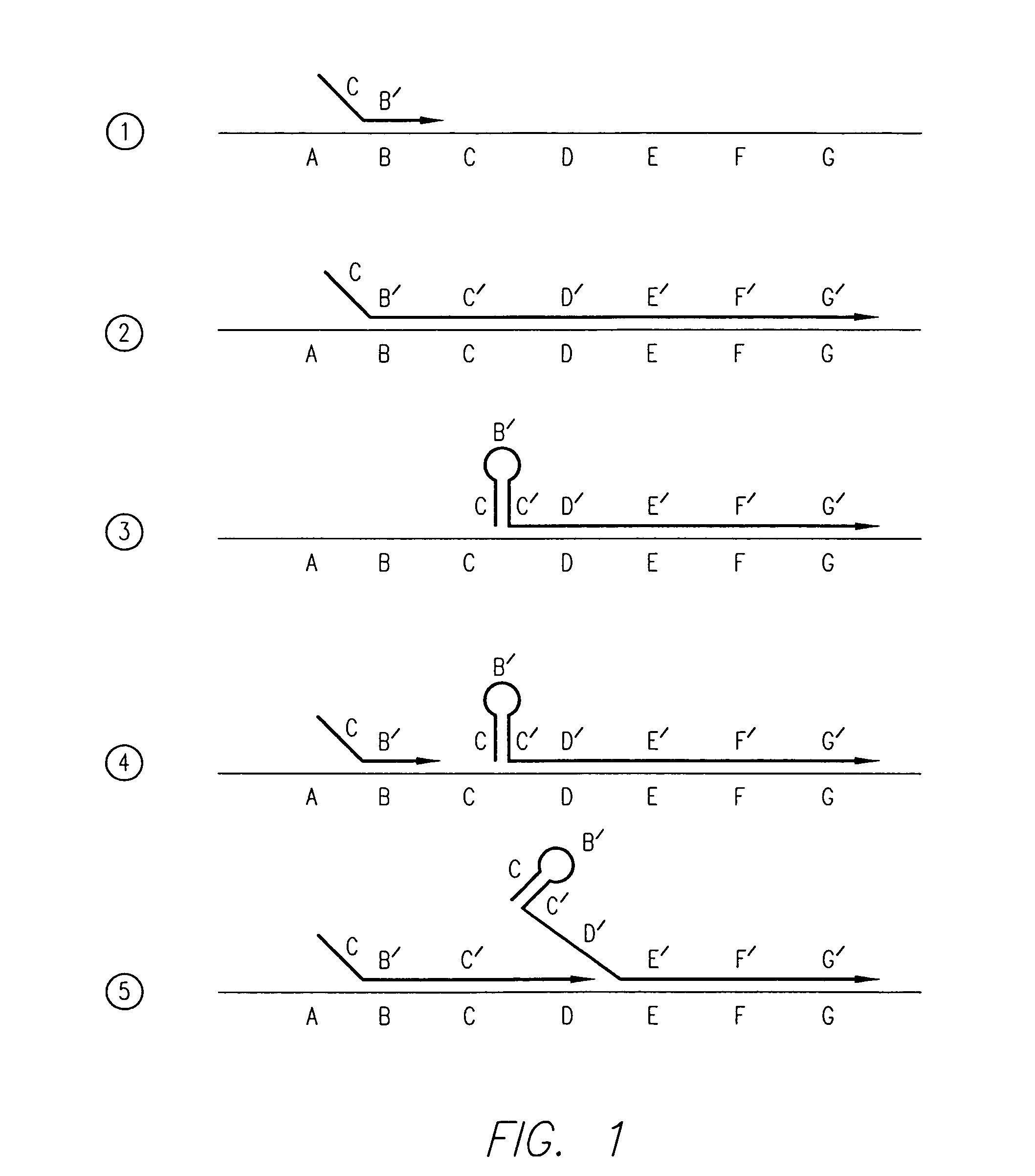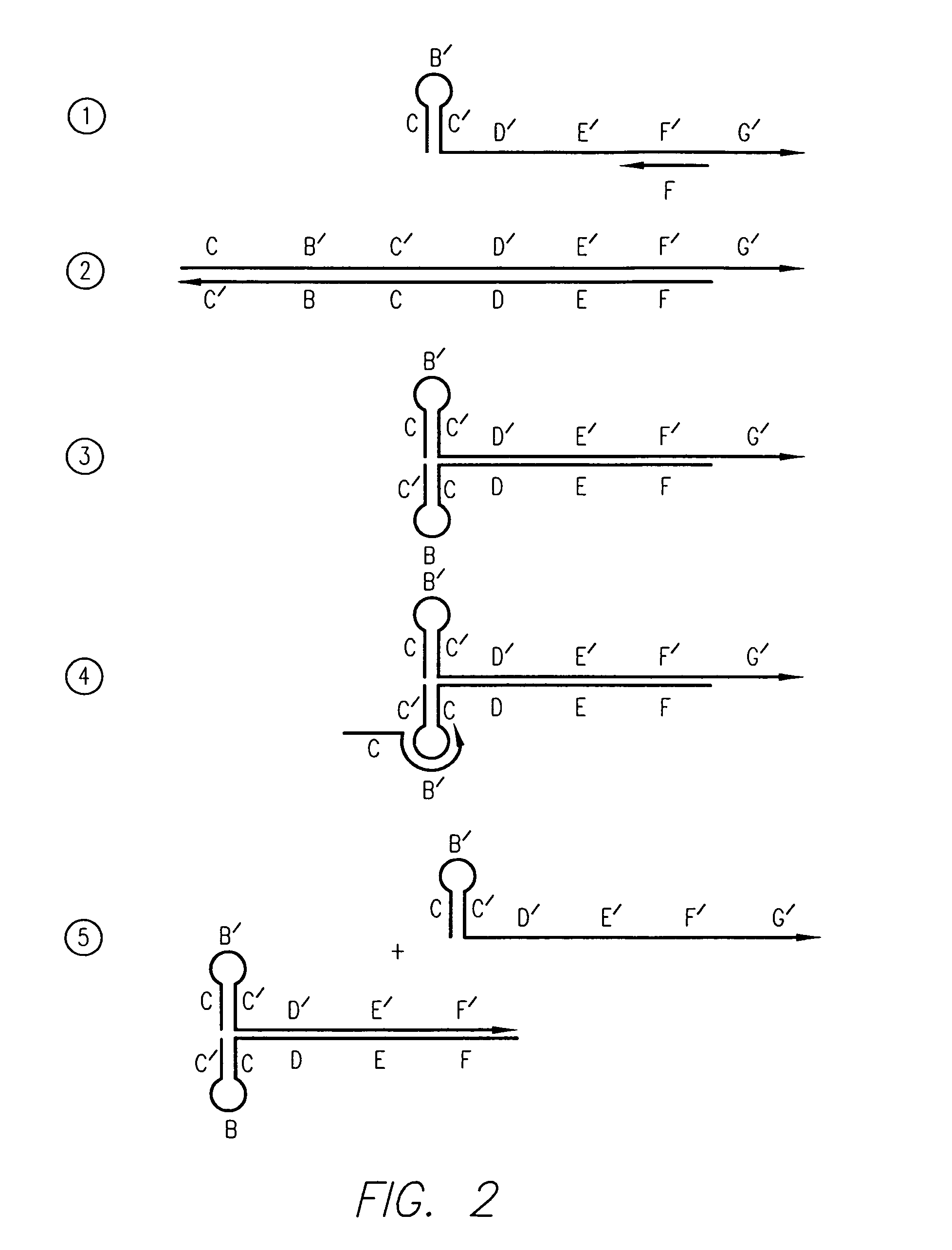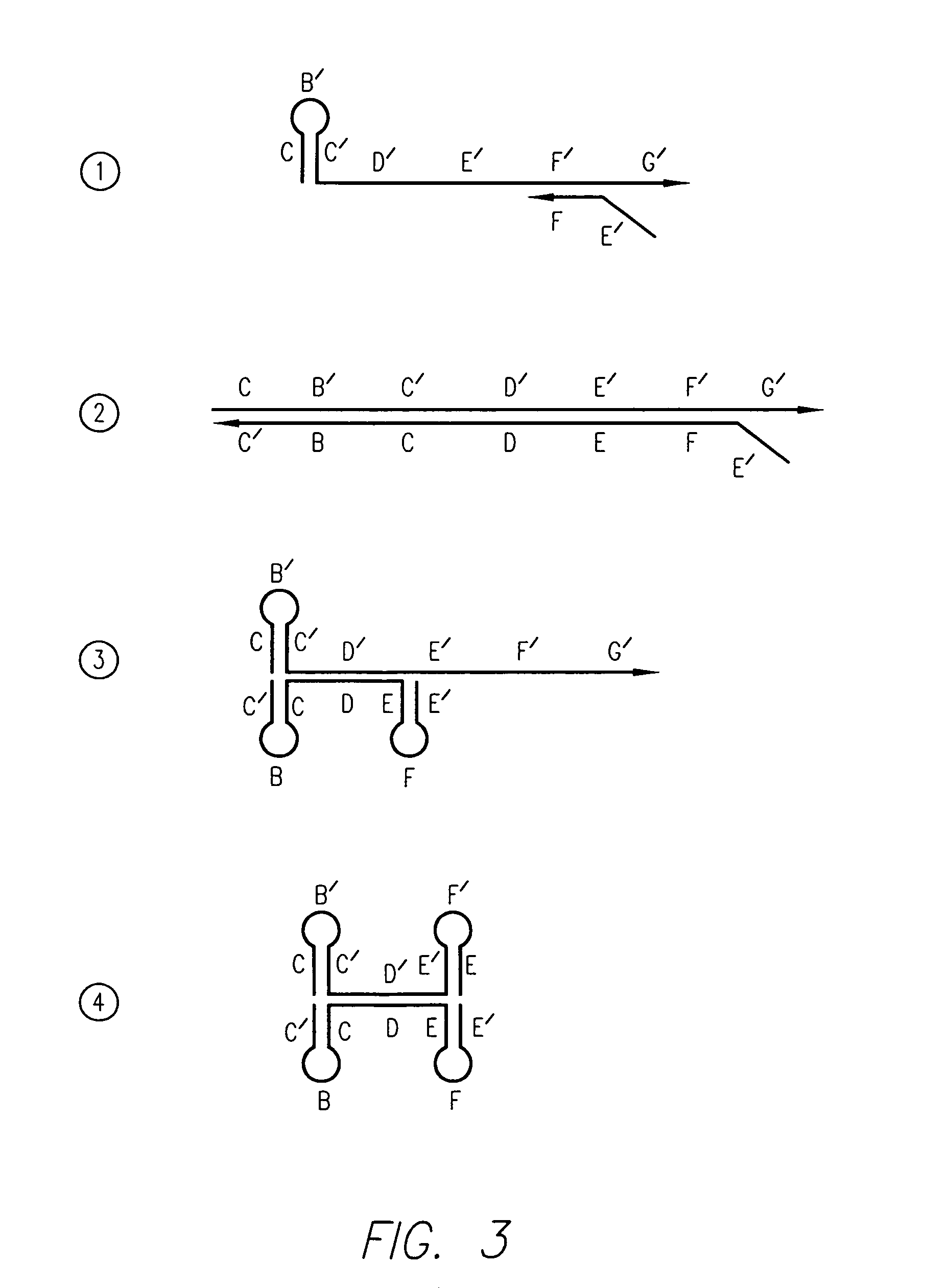Kits for amplifying and detecting nucleic acid sequences
a nucleic acid sequence and kit technology, applied in the field of recombinant nucleic acid technology, can solve the problems of reducing the thermodynamic stability of the system, the limitation of the necessity of expensive dedicated thermocyclers, and the inability to allow another priming event for the extended product, so as to achieve the effect of reducing the thermodynamic stability
- Summary
- Abstract
- Description
- Claims
- Application Information
AI Technical Summary
Benefits of technology
Problems solved by technology
Method used
Image
Examples
example 1
Isothermal Amplification of PCR Product by Bst Polymerase at 53° C. and 63° C.
(i) PCR Amplification of HBV Plasmid DNA
[0154]The HBV positive control from the HBV Microtitre Plate Assay (ENZO Diagnostics, NY, N.Y.) was used as a target for amplification by PCR. According to the manufacturer, this DNA is 80 pg / ul (the equivalent of 1.2×107 copies of HBV per ul). A 50 ul PCR reaction was carried out consisting of 1 ul of HBV target, 1× PE buffer (Perkin-Elmer, Emeryville, Calif.), 4 mM MgCl2, 250 um dNTP, 6 units of Amplitherm (Invitrogen, LaJolla, Calif.) and 10 pMoles of HBV oligo primers FC and RC.
[0155]
FC Sequence =5′-CATAGCAGCA GGATGAAGAG GAATATGATA GGATGTGTCTGCGGCGTTT-3′RC Sequence =5′-TCCTCTAATT CCAGGATCAA CAACAACCAG AGGTTTTGCATGGTCCCGTA-3′
[0156]In this example, the 29 bases at the 3′ end of the FC primer and the 30 bases at the 3′ end of the RC primer are first segments that are capable of extension using HBV target DNA as a template. The 30 bases at the 5′ end of the FC and RC...
example 2
Timecourse / Sensitivity of Isothermal Amplification of HBV Sequences
i) Amplification
[0162]HBV plasmid DNA previously digested with Eco R1 was used as a template for isothermal amplification. DNA Mixtures consisted of 100 ul containing 40 pM each of FC and RC primers, 1×ThermoPol Buffer (N.E. Biolabs, Beverly Mass.) and using a Model 480 thermocycler from Perkin-Elmer (Emeryville, Calif.). The machine was then set for 480 minutes at 63° C. After the block had adjusted to 63° C., individual tubes containing 25 ul of Enzyme Mix were put into the thermocycler block. Each tube of Enzyme Mix contained 4 units of Bst polymerase (N.E. Biolabs, Beverly Mass.), 1×ThermoPol Buffer (N.E. Biolabs, Beverly Mass.) and 400 uM dNTP's. After the DNA Mixtures and Enzyme Mixes had adjusted to 63° C., 25 ul samples were taken from each DNA Mixture and added to each Enzyme Mix tube for a total volume of 50 ul each. For each tube of DNA Mixture, three samples were taken. One sample for each DNA concentrati...
example 3
Amplification with ΔTth Polymerase
[0170]Due to the heat lability of the the Bst or Bca polymerases, the reactions in the previous examples, had to be carried out in two steps. The denaturation of target DNA was carried out in the absence of the polymerase followed by addition of the enzyme after equilibration at a lower temperature. It would be desirable to be able to include the polymerase in the initial step so as to reduce the handling steps and to reduce the chances of amplicon carryover contamination. Therefore, conditions were established that allowed the use of a 5′-3′ Exo derivative of Tth polymerase to carry out isothermal amplification. In this particular example, two primers designated FJ and RJ were used that had the following sequences:
[0171]
FJ Sequence =5′-CATAGCAGCA GGATGAAGAG GAATATGATA GCT GGATGTGTCTGCGGCGTTT-3′RJ Sequence =5′-TCCTCTAATT CCAGGATCAA CAACAACCAG TGC AGGTTTTGCATGGTCCCGTA-3′
[0172]Each of these primers are similar to the FC and FJ primers described previo...
PUM
| Property | Measurement | Unit |
|---|---|---|
| temperature | aaaaa | aaaaa |
| temperatures | aaaaa | aaaaa |
| temperatures | aaaaa | aaaaa |
Abstract
Description
Claims
Application Information
 Login to View More
Login to View More - R&D
- Intellectual Property
- Life Sciences
- Materials
- Tech Scout
- Unparalleled Data Quality
- Higher Quality Content
- 60% Fewer Hallucinations
Browse by: Latest US Patents, China's latest patents, Technical Efficacy Thesaurus, Application Domain, Technology Topic, Popular Technical Reports.
© 2025 PatSnap. All rights reserved.Legal|Privacy policy|Modern Slavery Act Transparency Statement|Sitemap|About US| Contact US: help@patsnap.com



